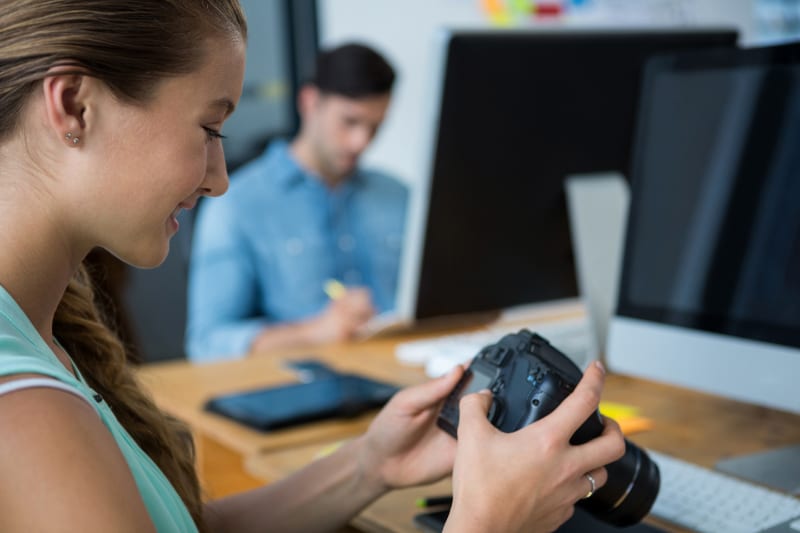What are SEO images? Alt text is an important part of pictures on a website. It describes what is in an image that may not be able to be viewed. In terms of a search engine optimized process, it can be important to include on a website. This is because it provides more detail to your website, and this can lead to more web traffic on your site. SEO images are images that have been optimized for your website and include alt text. We’ll tell you how to add alt text and optimized images to your website in this article.
What are SEO Images?
- 1 What are SEO Images?
- 2 Adding Alt Text Images to Your Website
- 3 Why Does Alt Text Matter for SEO?
- 4 How to Choose Your SEO Alt Text
- 5 Don’ts of Alt Texts
- 6 Tips for SEO-Friendly Images
- 7 Frequently Asked Questions About SEO Images and Alt Text
- 7.1 1. Do all images on my website need alt text, or are there exceptions?
- 7.2 2. What’s the ideal length for alt text, and what should I avoid including?
- 7.3 3. How do I choose the right keywords for my image alt text without over-optimizing?
- 7.4 4. Why should I compress images for SEO, and how does image size affect my rankings?
- 7.5 5. How can I track whether my image optimization efforts are working?
- 7.6 6. Do images help with SEO beyond just alt text, and what other factors matter?
- 7.7 7. Should my image optimization strategy differ for mobile devices versus desktop?
First off, what exactly is search engine optimization? Search engine optimization, or SEO, is the process in making your website the most friendly it can be to a search engine’s algorithm. Accomplishing SEO basics means your website will turn up higher in more searches, leading to an increase in web traffic to your site. There are many ways to do search engine optimization on your website. You can make sure each page has the right amount of words, which usually comes out to around 1,500. Also, you can use keywords which should highlight what your website is known for. Last, you can add SEO images.
Next, what is alt text in terms of SEO images? Alt text images are used when an image is not viewable. This could be due to it being unable to load, being locked by an ad, or any number of reasons. What the alt text of an image will do is describe what you would be seeing if you could view the image.
This description can also benefit people who may be hard of seeing, as they will be able to identify items in the picture better after reading the description. Alt text images are important in successfully conducting search engine optimization images.
Adding Alt Text Images to Your Website
To add alt text to an image on your website, open the gallery on your website. This will allow you to access all pictures on your web pages. Choose which photo you want to add the alt text to, and double click on it, or right click and choose the edit option. After getting to the edit screen, go to the image title field.
This gives you the option to both add a title, and alt text to the image. This process may differ slightly depending on what database yours is built, but most steps to create alt text images are the same.
Why Does Alt Text Matter for SEO?
Alt text matters for search engine optimization because it provides more detail and description to your website. This makes your website more attractive to visitors, making them more likely to return or stay on it longer. Alt text images also benefit your search engine optimization rankings. This is because the more details your website contains, the greater chance it has it will appear higher on search engines. The higher your website is displayed on search engines, the more clicks you will receive. These are just some of the reasons that alt text images are important for search engine optimization images.
How to Choose Your SEO Alt Text
Because you are using the alt text for search engine optimization, you need to take into account the words you are using for the alt text. Optimized images are boosted with the correct use of search engine optimized alt text.
Be Specific with Alt Text
Some ways to accomplish this are to make sure you are being as specific and precise with the details of the picture itself. The better your description, the higher it will boost search engine optimized alt text.
Keep it Relevant to your Web Page
Another method is to try and relate your image descriptions or hashtags to things on your web page. This makes the description a better reflection of your website, and will help attract more web traffic. An example of this may be a fur shop with a picture of a fox on their web page, and making the tags about the fur type or color. By relating the picture to your products, you are boosting the search engine optimization of your site.
Be Creative with your Tags
Don’t forget to be creative with your tags. Repeating the same words in different ways will not help you much in the search rankings. Having creative tags that match what your website does or features is a great way to optimize your website for search engineers.
Don’ts of Alt Texts
Next, let’s discuss the things you shouldn’t do when it comes to alt text.
Every Image Doesn’t Need Alt Text
A common misconception is that every single picture on your website needs to have alt text attached to it. This is actually false, and could potentially damage your search engine optimization images. If a picture does not represent something on your website and is merely there for decoration, it does not need any alt text. Alt text is also not required for a simple stock photo that may be used on your website. The description would add nothing of relevance to your site, and may over-saturate your image’s search engine optimization.
Don’t Overdo it with Keywords
Some tips for the actual writing of the alt text include not cramming a ton keywords into your alt text. Simply fitting in as many keywords as possible into your image alt text goes against search engine optimized alt text. That’s because it over-saturates your website’s keywords. This dilutes the effect they have on search engine rankings, making them less effective for your website.
Be Concise
Being concise with your descriptions is also important. Even though you want to be as accurate as possible with your descriptions, you do not want them to be too lengthy. You need to find the best compromise in between the two for successful search engine optimized images. One way to accomplish this is by avoiding stating that the image is an image in the alt text. That just wastes space you could use to actually describe the picture better search engine optimizes your alt text. Your alt text should be a maximum of 125 characters.
Tips for SEO-Friendly Images
Making SEO-friendly images is the process of making your images feature better on search engines. This will make them appear higher and more frequently when an image search is conducted on a search engine.
Compress Your Images
A great way to do this is to make sure your images do not take up to much space. Always compress your images to make them search engine optimization friendly and the right size. Choose images to highlight that you feel are important to your website. Place them in more visible positions on your website to see that they are clicked on more. Having too many images on your web pages can result in none of the images being featured as well.
Make Your Images Mobile-Friendly
Another great tip in creating search engine optimized friendly images is making sure that they are mobile-friendly. Search engine optimized images work the same way on mobile. However, the images do not always look the same as they do on a desktop. This can result in people clicking off the image if they are in mobile, and result in a lot of missed clicks. To ensure this does not happen and the image is search engine optimization friendly, even in mobile mode, make sure you test it out before using the image for your site.
Track How Your Images Perform
The last tip to improve an image’s search engine optimization, is to simply track how it performs. By monitoring the success of the alt text and alt text hashtags, you can see which are the most effective at bringing in web traffic. You can also evaluate how the image itself is performing, and if there is a better option then it. By tracking these factors, you can better create search engine optimized friendly images.
Choose the Right Keywords for Alt Text
It’s important to choose the right keywords for your alt text, and properly choosing how the images are used on your website. If you do not understand how to successfully utilize search engine optimization, a great place to start is looking online for help.
So know you are hopefully a little more informed about how alt text works for images, and how that relates to search engine optimization. There are a ton of guides out there for this process. It can be a difficult task to create optimized images for your website. If you need help with SEO or alt text, contact SEO Design Chicago today!
Frequently Asked Questions About SEO Images and Alt Text
1. Do all images on my website need alt text, or are there exceptions?
Not every image needs alt text. Decorative images that serve no informational purpose, simple stock photos used purely for visual appeal, and images that don’t add value to your content can skip alt text. Focus on adding alt text to images that convey important information, support your content, or help users understand your products or services. Over-saturating your site with unnecessary alt text can actually hurt your SEO by diluting the effectiveness of your keywords and creating a poor user experience.
2. What’s the ideal length for alt text, and what should I avoid including?
Keep alt text concise, with a maximum of 125 characters. Be specific and descriptive but avoid unnecessary words like “image of” or “picture of” since screen readers already identify the element as an image. Focus on describing what’s actually important about the image in relation to your content. Avoid keyword stuffing or cramming multiple keywords into the alt text, as this can hurt your SEO rankings rather than help them.
3. How do I choose the right keywords for my image alt text without over-optimizing?
Select keywords that naturally describe the image and relate to your page content. Use one primary keyword per image that’s relevant to both the visual content and your webpage topic. For example, if you have a picture of a red leather handbag on a product page, use descriptive terms like “red leather handbag” rather than stuffing in unrelated keywords. The alt text should sound natural when read aloud and provide genuine value to users who can’t see the image.
4. Why should I compress images for SEO, and how does image size affect my rankings?
Compressed images improve your website’s loading speed, which is a crucial SEO ranking factor. Large, uncompressed images slow down page load times, leading to higher bounce rates and poor user experience. Search engines penalize slow-loading websites in rankings. Compress your images to reduce file size while maintaining quality, ensure they’re mobile-friendly, and test loading speeds regularly. Faster-loading images contribute to better overall site performance and improved search engine rankings.
5. How can I track whether my image optimization efforts are working?
Monitor your image performance through Google Analytics by tracking metrics like page load times, bounce rates, and time spent on pages with optimized images. Use Google Search Console to see if your images are appearing in image search results and track clicks from image searches. Check your website’s overall search rankings and organic traffic to see if image optimization contributes to improved performance. Also monitor mobile performance specifically, as images must work well across all devices.
6. Do images help with SEO beyond just alt text, and what other factors matter?
Yes, images contribute to SEO in multiple ways beyond alt text. They improve user engagement by making content more visually appealing, which can reduce bounce rates and increase time on page. Properly optimized images can rank in Google Image Search, driving additional traffic. Image file names, captions, and surrounding text also matter for SEO. Additionally, original, high-quality images can help establish your site’s authority and expertise compared to sites using only stock photos.
7. Should my image optimization strategy differ for mobile devices versus desktop?
Your images should be responsive and work well on all devices, but mobile optimization requires special attention. Ensure images load quickly on mobile connections, display properly on smaller screens, and don’t slow down mobile page speed. Test your images on actual mobile devices to verify they appear correctly and maintain their visual impact. Since mobile-first indexing means Google primarily uses the mobile version of your site for ranking, mobile-optimized images are crucial for SEO success. Consider using different image sizes for different screen sizes to optimize loading speed across devices.








Contact Us today!